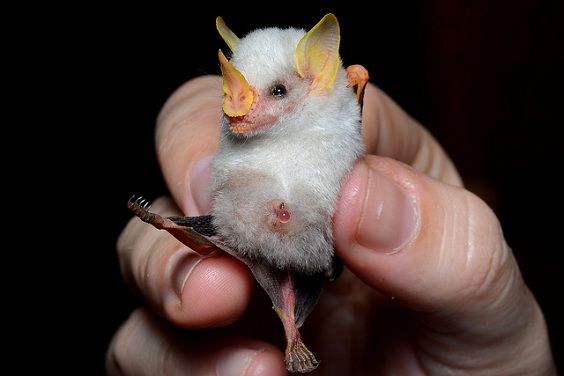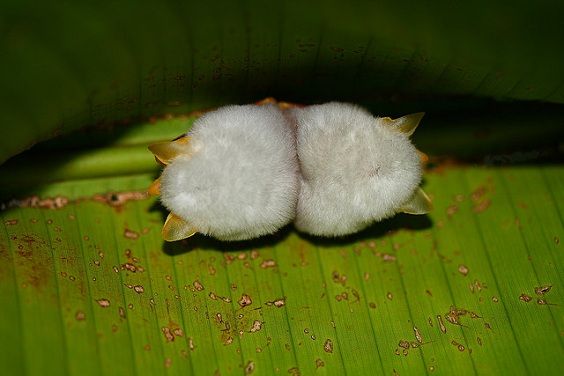They don't live in caves, they don't suck blood, they aren't black. Sweep away the usual horrifying stereotypes about bats, because there are extraordinary creatures such as the Ectophylla alba, commonly known as the White Bats of Honduras because they are mainly found in the rainforests of this country, even if they live there and in Nicaragua, Panama and Costa Rica, that will make you think again.
He is about to end up run over, his mother saves him
They don't live in caves, they don't suck blood, they aren't black. Sweep away the usual horrifying stereotypes about bats, because there are amazing creatures like bats Ectophylla alba, commonly known as Honduran white bats because they are mainly found in the rainforests of this country, even if they live there and in Nicaragua, Panama and Costa Rica, which will make you think again.
Di really tiny size for being winged mammals (just 5 centimeters long), the Ectophylla alba, true to their name, have a candid and soft white hair, necessary to ensure perfect camouflage among the palm leaves: when the sun's rays shine through the leaves of the vegetation, they reflect the green color on the mantle, camouflaging it and making it difficult to identify.
But they are not completely white: the their ears, snout, nose and part of legs and wings are yellow-orange. Since their protruding nose is triangular in shape, scientists have classified them in the leaf-nosed bat family. A thin black membrane covers their skull, probably to protect them from ultraviolet radiation as a kind of natural sunscreen. But Honduran White Bats aren't extraordinary for all of these reasons alone.


They also have the ability to use palm leaves, which are cut along the veins and closed in the shape of a V, to transform them into shelter “tents”, capable of accommodating from one to twelve individuals at the same time. When resting, they all hang close together, upside down in the center of the leaf. Tents help them protect themselves from rain, sun and predators. These bats, in fact, choose only leaves that are six meters above the ground, high enough, that is, to be out of reach of terrestrial predators.
Furthermore, the branches of the plant on which they rest are not very strong: any predator that touches the leaves will make the tent of flying mammals tremble, which can flee in the blink of wings. And because their home isn't always safe, they rarely go back to sleep in the same leaf for more than a day. And if they rest during the day, at night they emerge from sleep in search of food. The bats you see in these photos are almost all female. Each colony consists of a single male with up to six females making up its harem.
Roberta Ragni
Read also:
- New bat species discovered in Vietnam


























